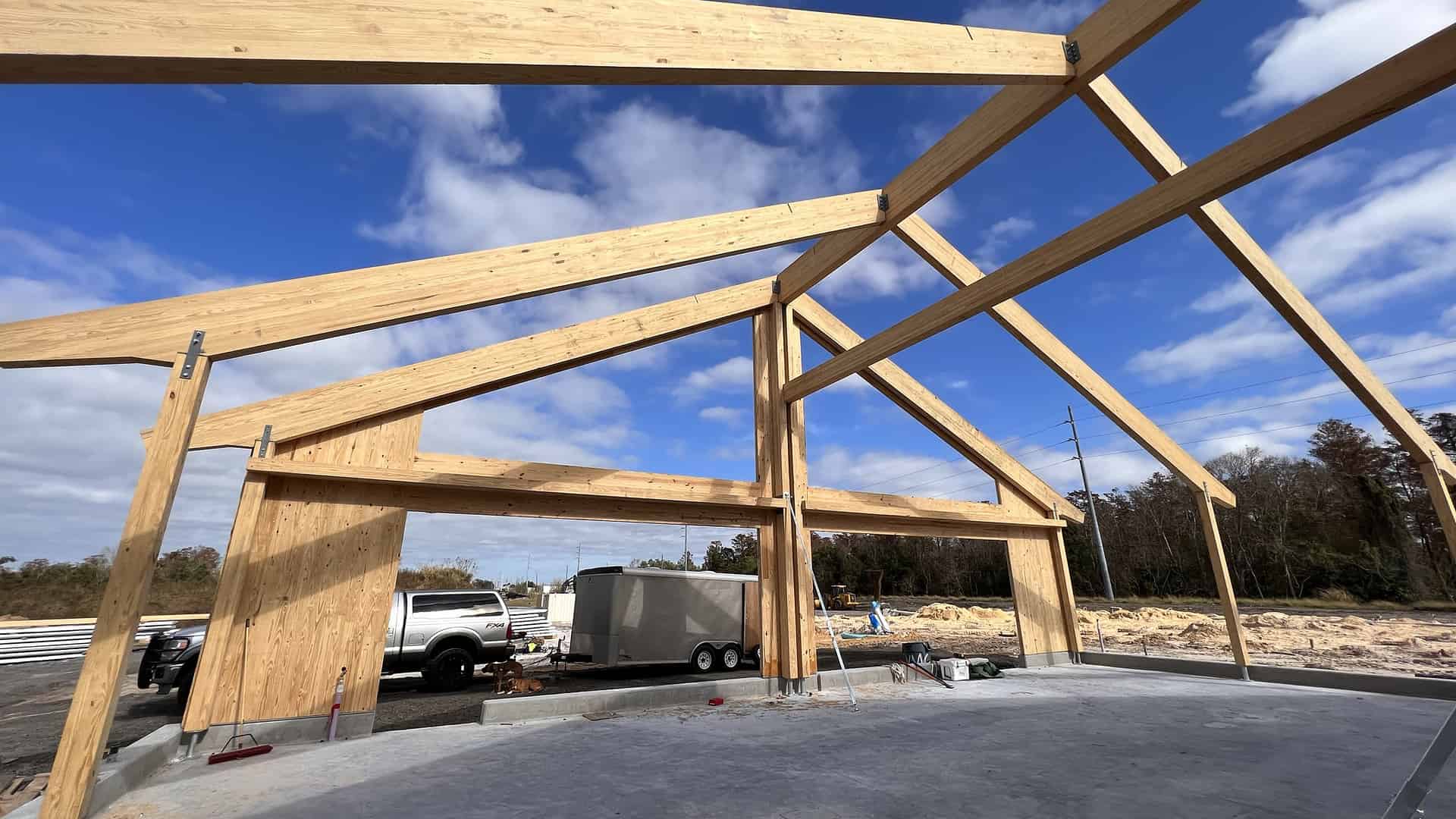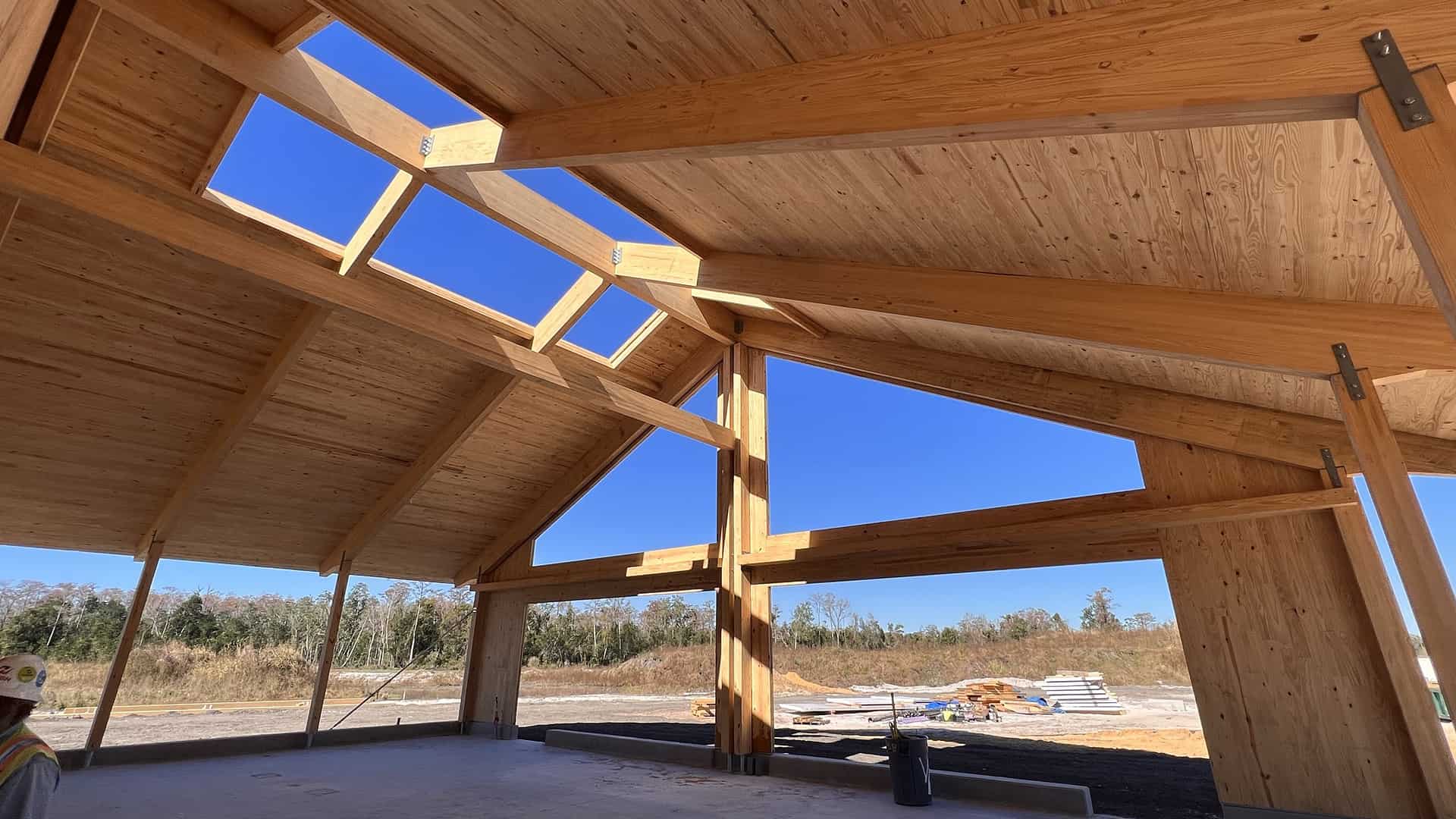Wood is one of the oldest building materials in existence. In fact, people have been using wood in construction for over 10,000 years. While its use has slowly declined over the past few centuries, it is making a comeback as mass timber—a strong, safe, and sustainable building solution.
TYPES OF WOOD CONSTRUCTION
Three types of wood dominate the construction world:
- Conventional timber
- Heavy timber
- Mass timber
Conventional timber refers to single-dimensional lumber traditionally found in home improvement stores and used for wall framing, flooring, ceilings, and cabinetry. Heavy timber is just that—large, heavy-sawn timbers cut from a single tree. Typically used for visible main beams and posts, its use dates back to the 10th century, making it one of the oldest known forms of construction.
Invented in Austria and Germany during the 1990s, mass timber, however, is relatively new. An engineered wood product made from compressed layers of solid wood bonded by glue, nails, or dowels, it differs from conventional and heavy timber in that it is exceptionally strong—as strong as concrete and steel, but significantly lighter in weight. It is a collective term used for products of various sizes and functions, and can be used in construction as beams, columns, floors, and walls.

MASS TIMBER PRODUCT TYPES
There are multiple mass timber products available. Each uses a unique method to turn small pieces of wood into a solid product. Materials most commonly used in mass timber construction today, include:
- Cross-Laminated Timber (CLT)
- Nail-Laminated Timber (NLT)
- Dowel-Laminated Timber (DLT)
- Glued-Laminated Timber (glulam)
- Mass Plywood Panel (MPP)
- Laminated Strand Lumber (LSL)
- Oriented Strand Lumber (OSL)
- Laminated Veneer Lumber (LVL)
- Parallel Strand Lumber (PSL)
MASS TIMBER ADVANTAGES
Mass timber has many advantages. Wood is a quickly renewable resource, making mass timber a sustainable building material with a low carbon footprint. Comprised of many smaller members, it allows for a more efficient use of the tree. Additionally, it has a high thermal mass, which can absorb and store heat energy. This helps regulate building temperature and reduce energy use.
Mass timber is economical. Not only does it cost less than concrete and steel, but it is also easy to work with. Many components allow for prefabrication or quick assembly on-site, reducing construction time and cost.
Lastly, it simply looks nice. Mass timber buildings feature natural, warm aesthetics that create an appealing look.

MASS TIMBER LIMITATIONS
Although there are many compelling reasons to choose mass timber as a building material, there are some limitations to consider. Because it is relatively new, mass timber—and qualified contractors and suppliers—may not be available in all markets.
Another consideration is fire safety. While safe and fire-resistant, mass timber derives from wood and, therefore, is combustible. The fire resistance stems from the charring of the wood insulating the core of the member from heat, similar to what spray-fireproofing does for steel. In-depth code analysis is required to select construction type and conformance requirements.
Structurally, mass timber can be sized for any loading and span. However, to keep the depth of the structure to a reasonable size, the distance between two intermediate supports (a beam, for instance) typically needs to be reduced compared to steel.
As with all wood products, mass timber is sensitive to moisture, which causes warping, swelling, and eventually rot. Buildings must be designed and constructed to stay dry and allow for proper ventilation.
Lastly, mass timber structures typically have the timber exposed, reducing the acoustic performance compared to typical buildings. Additional acoustic measures may be required to prevent sound transmission.
THE BUILDING MATERIAL OF THE FUTURE?
Constant advances are being made in the production and performance of mass timber. From innovations in material strength allowing for longer spans and taller structures to updated code compliance that expands construction types and requirements, it is no longer considered an emerging building technology. With designers, owners, and developers looking for more ways to reduce their environmental impact, its demand will continue to grow.

